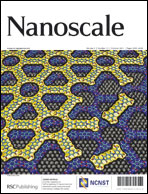High surface area highly ordered nanoporous thin films are the current gold standard for gas sensor use, however the nanostructure of such films is prone to collapse at annealing temperatures as low as 250 °C resulting in formation of a dense layer of limited utility. We report on a templating method used to deposit highly ordered nanoporous platinum (Pt)-doped tin dioxide (SnO2) thin films that are crystallized by a 100 °C water vapor hydrothermal treatment, with the low temperature process being compatible with a large variety of substrates including plastic. The resulting highly ordered nanoporous, transparent Pt–SnO2 thin films are mechanically stable and can be annealed, as desired, at temperatures up to 800 °C for removal of the templating materials and tailoring of gas sensitivities without damage to the nanoporous structure. The synthesis method is general, offering a promising strategy for preparing high performance nanoporous metal oxide crystalline films for applications including gas sensing, photocatalysis, and 3rd generation photovoltaics. In our example application of the synthesized materials, we find that these Pt–SnO2 films exhibit exceptional hydrogen gas sensing behavior, rapidly detecting low-level hydrogen concentrations at room temperature; for example, an eight order of magnitude change in electrical resistance is seen in response to 10 000 ppm H2, with only minimal sensitivity to humidity.

You have access to this article
 Please wait while we load your content...
Something went wrong. Try again?
Please wait while we load your content...
Something went wrong. Try again?


 Please wait while we load your content...
Please wait while we load your content...